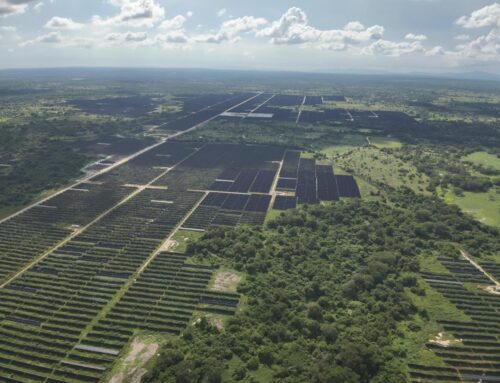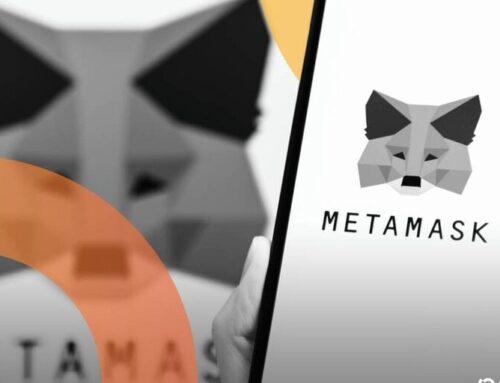How the little-known ‘dark roof’ lobby may be making US cities hotter
June 1, 2025
It began with a lobbyist’s pitch.
Tennessee representative Rusty Grills says the lobbyist proposed a simple idea: repeal the state’s requirement for reflective roofs on many commercial buildings.
In late March, Grills and his fellow lawmakers voted to eliminate the rule, scrapping a measure meant to save energy, lower temperatures and protect Tennesseans from extreme heat.
Grills, a Republican, told Floodlight that he introduced the bill to give consumers more choice.
It was another win for a well-organized lobbying campaign led by manufacturers of dark roofing materials.
Industry representatives called the rollback in Tennessee a needed correction as more of the state moved into a hotter climate zone, expanding the reach of the state’s cool-roof rule. Critics called it dangerous and “deceptive”.
“The new law will lead to higher energy costs and greater heat-related illnesses and deaths,” state representative Harold Love and the Rev. Jon Robinson said in a statement.
It will, critics warned, make Nashville, Memphis, and other cities hotter – particularly in underserved Black and Latino communities, where many struggle to pay their utility bills. Similar lobbying has played out in Denver, Baltimore and at the national level.
Industry groups have questioned the decades-old science behind cool roofs, downplayed the benefits and warned of reduced choice and unintended consequences. “A one-size-fits-all approach doesn’t consider climate variation across different regions,” wrote Ellen Thorp, the executive director of the EPDM Roofing Association, a DC-based national group which represents an industry built primarily on dark materials.

But the weight of the scientific evidence is clear: on hot days, light-colored roofs can stay more than 50 degrees cooler than dark ones, helping cut energy use, curb greenhouse gas emissions and reduce heat-related illnesses and deaths. One recent study found that reflective roofs could have saved the lives of more than 240 people who died in London’s 2018 heatwave.
At least eight states – and more than a dozen cities in other states – have adopted cool-roof requirements, according to the Smart Surfaces Coalition, a national group of public health and environmental groups that promote reflective roofs, trees and other solutions to make cities healthier.
Industry representatives lobbied successfully in recent months against expanding cool roof recommendations in national professional energy efficiency codes – the standards that many cities and states use to set building regulations.
The stakes are high. As global temperatures rise and heat waves grow more deadly, the roofs over our heads have become battlefields in a consequential climate war. It’s happening as the Trump administration and Congress move to derail measures designed to make appliances and buildings more energy efficient.
Why roof color matters
The principle is simple: light-colored roofs reflect sunlight, so buildings stay cooler. Dark ones absorb heat, driving up temperatures inside buildings and in the surrounding air.
Roofs comprise up to one-fourth of the surface area of major US cities, researchers say, so the color of roofs can make a big difference in urban areas.
Just how hot can dark roofs get?
“You can physically burn your hands on these roofs,” said Bill Updike, who used to install solar panels and now works for the Smart Surfaces Coalition.
Study after study has confirmed the benefits of light-colored roofs. They save energy, lower air conditioning bills and reduce city temperatures. They help prevent heat-related illnesses. And they typically cost no more than dark roofs.
A study by the US Department of Energy’s Lawrence Berkeley National Laboratory found that a cool roof on a home in central California saved 20% in annual energy costs.
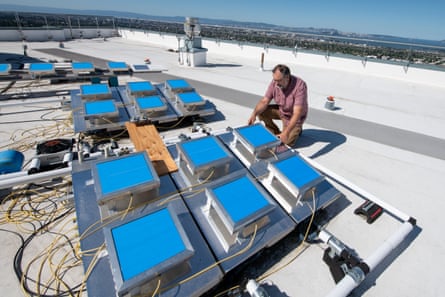
In a three-story rowhouse in Baltimore, Owen Henry discovered what a difference a cool roof can make.
Living in a part of the city with few trees – and where summer temperatures often climb into the 90s – Henry wanted to trim his power bills and stay cooler while working in his third-floor office. So in 2023, he used $100 worth of white reflective roof paint to coat his roof.
Henry said he and his wife immediately saw the indoor temperature drop. They reduced their electricity use – by 24%.
Cool roofs, hot debate
Known for its durability, a black synthetic rubber known as EPDM once dominated commercial roofing. But in recent years it has been surpassed by TPO, a plastic single-ply material which is typically white and is better suited to meet the growing demand for reflective roofs.
Leading EPDM manufacturers – including Johns Manville, Carlisle SynTec and Elevate, a division of the Swiss multinational company Holcim – also make reflective roofing materials. But they have fought against regulations that threaten to further diminish their market share.
In an emailed response to Floodlight’s questions, Thorp argued that many of the studies cited to support cool roof mandates leave out important factors, such as local climate variations, roof type, tree canopy and insulation thickness.
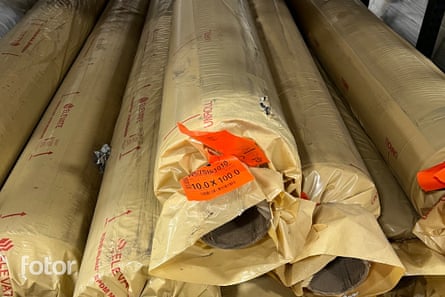
And she pointed to a recent study by Harvard researchers who concluded that white roofs and pavements may reduce precipitation, causing temperatures to unexpectedly increase in surrounding regions.
But Haider Taha, a leading expert on urban heat, identified flaws in the Harvard study, stating: “The study’s conclusions fail to provide actionable insights for urban cooling strategies or policymaking.”
A fight over cool roofs in Baltimore
When Baltimore debated a cool roof ordinance in 2022, Thorp’s group and the Asphalt Roofing Manufacturers Association (ARMA) lobbied hard against it, arguing that dark roofs are the most efficient choice in “northern climates like Baltimore”.
In cold climates, industry representatives note, cool roofs can lead to higher winter heating bills.
“Current research does not support the adoption of cool roofs as a measure that will achieve improved energy efficiency or reduced urban heat island,” Thorp wrote in a letter to one council member.
Multiple studies show otherwise. They’ve concluded that reflective roofs do save energy and cool cities by easing the “urban heat island effect” – the extra heat that gets trapped in many city neighborhoods because buildings and pavement soak up the sun.
Researchers have also found that even in most cold North American climates, the energy savings from cool roofs during warmer months outweighs any added heating costs in the winter.
Despite the opposition, Baltimore passed a cool-roof ordinance in 2023.
Opponents of cool roof requirements like Baltimore’s say they oversimplify a complex issue. In an email to Floodlight, ARMA executive vice-president Reed Hitchcock said such rules aren’t a “magic bullet”. He encouraged regulators to consider a “whole building approach” – one that weighs insulation, shading and climate in addition to roof color to preserve design flexibility and consumer choice.
Henry, the Baltimore homeowner, said he thinks the city’s ordinance will help all residents. “Phooey to any manufacturer that’s going to try and stop us from maintaining our community and making it a pleasant place to live,” he said.
Industry gets its way in Denver and Tennessee
Elsewhere, the industry’s lobbyists have notched victories. They lobbied successfully to water down a cool-roof ordinance in Denver and to block stricter standards by the American Society of Heating, Refrigeration and Air Conditioning Engineers (ASHRAE) – a professional organization that creates model standards for city and state regulations.
The current ASHRAE standard recommends reflective roofs on commercial buildings in US climate zones 1, 2 and 3 — the country’s hottest regions. Those include most of the south, Hawaii, almost all of Texas, areas along the Mexican border and most of California.
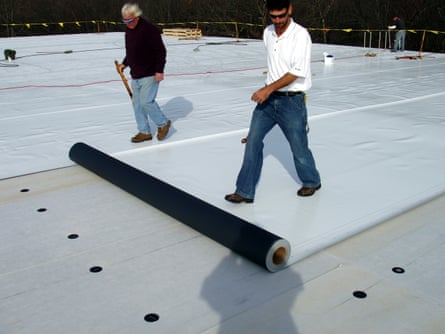
Said Thorp in a recent interview, “We’ve been able to stop all of those … mandates from creeping into climate zone 4 and 5.”
Another group headed by Thorp – the Coalition for Sustainable Roofing – worked with the lobbyist to propose the bill that eliminated Tennessee’s cool-roof requirement.
That rule once applied to commercial buildings in just 14 of the state’s 95 counties, but an update to climate maps in 2021 expanded the requirements to 20 more counties, including its most populous urban area – Nashville.
As mercury rises, homeowner chooses a reflective roof
Brian Spear, a homeowner in Tempe, Arizona, has lived in the Phoenix area since the 1980s, back when there were fewer than 30 days a year when the temperature reached 110F. Last year, there were 70 of those days – the highest on record — followed only by 2023, when there were 55 days of 110F plus.
These days, summer mornings start out scorching, he says, “and I feel like if you go outside between 10am and 4pm, it’s dangerous.”
Spear says he’ll soon replace the aging roof on an Airbnb home that he owns. After weighing the usual concerns – cost and aesthetics – he has chosen a surface that he believes will help rather than harm: a gray metal roof with a reflective coating.
“If someone told me you couldn’t put a dark roof on your house … I’d understand,” he said. “I’m all about it being for the common good.”
-
Floodlight is a nonprofit newsroom that partners with local and national outlets to investigate the powerful interests stalling climate action. Read the full version of this story here
Search
RECENT PRESS RELEASES
Related Post
